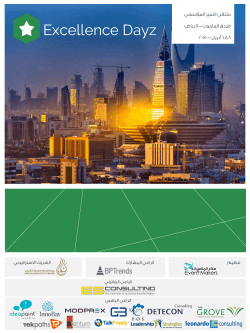
Hanna Koivula - Citizen Science in Finland. Why to
Citizen Science in Finland ~ Why to participate? What to do with the data? Hanna Koivula 2013-03-22 Hanna Koivula/ IT-team www.luomus.fi 22.3.2013 1 Finnish Museum of Natural History LUOMUS LUOMUS is an independent research institution functioning under the University of Helsinki. It is also one of the three central national museums in Finland and responsible for the national collections in its field. The collections serve research in the fields of biology and geology as well as educational purposes. Henkilön nimi / Esityksen nimi / Tieteenala www.luomus.fi 22.3.2013 2 Finnish Museum of Natural History LUOMUS Research units: Exhibitions: Botany and mycology Natural history museum Zoology Botaical garden in Kaisaniemi Geology Botaical garden Kumpulan Laboratory of Chronology Mineral cabinet www.luomus.fi What kind of research? Taxonomy and systematics Genetics Biodiversity Natural history and evolution Biogeography All research is based on collections and observations i.e. Primary & Ocurrence Data Henkilön nimi / Esityksen nimi / Tieteenala www.luomus.fi 22.3.2013 4 What is citizen science? Long traditions in Observing and Collecting Observing birds (migration) Observing fenology and weather (for farming purposes) Hunting Collecting butterflies, other insects, plants, bird eggs and/or nests Earliest historical information about monitoring the timing of bird migration date back to 1749 Modern ways of doing citizen science: Photography Observing with standardized methods (organized by NGO:s) Twitching i.e. Collecting ”points” Collecting butterflies or other insects Collecting samples Sharing lists and information or even competing between enthusiasts Hanna Koivula / ICT-team www.luomus.fi 22.3.2013 5 5 Data and its uses – What kinds of questions can citizen science answer? Inference Use existing data Analyze citizen science data Generate hypothesis Detect patterns and trends with: Data mining Statistical tests and models Interpolated map surfaces Graphs/charts Hanna Koivula / ICT-team Formulate predictions Statistical analyses and results Ecologists ask participants to: Conduct targeted monitoring Conduct experiments Send in samples for analysis Place sensors and upload data www.luomus.fi 22.3.2013 6 Why to participate? Improving ones own expertise Adding data/knowledge to the common “pool” Environmental protection (Volunteer surveys of target areas or species) As a hobby or even for competition Immediate feedback => seeing observations in a report, list or on the map Intresting research and results Henkilön nimi / Esityksen nimi / Tieteenala www.luomus.fi 22.3.2013 7 Citizen science projects have offered valuable data to research focusing on: Changes in species richness and community composition Phenology Timing and other aspects of Migration Global Climate-Change Effects on Species Populations Landscape Ecology: Habitat Loss and Fragmentation Interspecific competition and the ecology of invasive species Ecology of infectious disease By publishing (even collection) data over the Internet, it becomes possible to find and correct erors and thus improve the data quality (with crouwd soursing) 8 Henkilön nimi / Esityksen nimi / Tieteenala www.luomus.fi 22.3.2013 Biases and their fixes in citizen sciense data Biases in the quality of identification NGO:s and Museum capaigns for improving identifiaction skills By publishing field guides and identication keys Species pages (in the Internet) Biases in geographical distribution of observing effort Targeting certain areas or species with campaigns weighting in the calculations, when presenting data Biases due to varying skills in standardised observing methods Educating enthusiasts to methodology For example: Bird observations with line- and point monitoring schemes Bias due to better equipment The amount and quality of data has improved during last decades due to better equipment Binoculars, monoculars, digital cameras, smart phones, recorders and attached GPS features open a wide range of new possibilities Henkilön nimi / Esityksen nimi / Tieteenala www.luomus.fi 22.3.2013 9 Citizen Science Projects in Finland 1. Finnish Breeding Bird Atlas 2006-2010 2. Finnish Winter Bird Census 2005-> 3. Atlas of Amphibians and Reptiles 2006-> 4. Bird ringing, nestcards, birds of pray studies 5. Line- and point monitoring schemes 6. HAVINA- invasive species portal 7. National Butterfly Recording Scheme 8. Dead animals reporting system 9. Dragonfly Society peer-reviewd obs. 10. Oak Leaf-miners / Helsinki University 11. Spring Watch / Luonto-Liitto 12. Environmental assessment of Mikkeli area / Mikkelin seudun ympäristöpalvelut 13. Otter distribution Assessment / Uudenmaan ympäristökeskus 14. Distribution assessment of wild thyme/ Finnish Environmental Services 15. Alien plants distribution / Finnish Environmental Services More research projects are added yearly! Henkilön nimi / Esityksen nimi / Tieteenala www.luomus.fi 22.3.2013 10 Data sources Talvilintulaskenta Virtala NAFI Fieldjournal.org Hatikka.fi Kastikka Artportalen.se Artsobservasjoner.no Henkilön nimi / Esityksen nimi / Tieteenala www.luomus.fi 22.3.2013 11 Henkilön nimi / Esityksen nimi / Tieteenala www.luomus.fi 22.3.2013 12 Nesting sites of the brambling, Firingilla montifringilla Hanna Koivula / ICT-team www.luomus.fi 22.3.2013 13 Viola biflora, Twoflower Violet, Arctic Wood Violet, Arctic Yellow Violet Hanna Koivula / ICT-team www.luomus.fi 22.3.2013 14
© Copyright 2025














